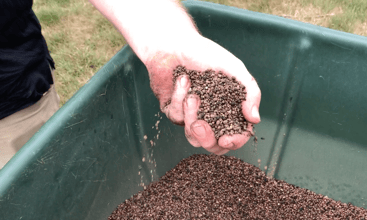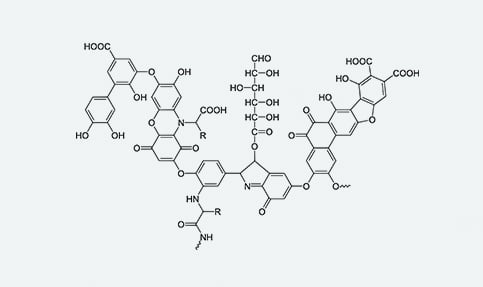Humic acid treats your soil, not your plants. Healthy Soil = A Healthy Lawn!
It allows your plants to more easily access the nutrients that are already present in your soil. The less work your plants need to do to get what they need, the happier they are!
What is Humic Acid?
Humic acid is the main component of the decomposed organic material in your soil. They are complex molecules that exist naturally in soils, ocean and freshwater.
As plants and animals decay, they leave behind molecules that are consumed by other organisms. This cycle repeats until we are left with humus - molecules that can no longer decompose.
Humic acid is a group of molecules which bind to plant roots, dramatically helping them receive the nutrients and water they need.

Benefits of Humic Acid:
-
Increases Micronutrients In Soil
-
Increases Soil Fertility
-
Root Growth
-
Increased Nutrient Uptake: Improve’s plant’s ability to take in nutrients.
-
Soil Structure: Sandy soil is not able to hold moisture well. Humic acid will help your soil retain moisture.

Humic Acid in Lawn Care:
The majority of fertilizers used in the lawn care industry usually consist of three nutrient components:
- Nitrogen
- Phosphorus
- Potassium
In Connecticut, we no longer use Phosphorus unless it is with seeding or if a soil test shows that your lawn is deficient. Most New England lawns have a good bank of Phosphorus already in soil - it comes down to a matter of whether your lawn can access this available Phosphorus or not.
Phosphorus’ main role in plant growth is root growth and flowering - so it is still vital. This is where Humic Acid comes in - it helps us free up the nutrients that already exists in our soil.
Think of humic acid as turning your soil into a well-stocked pantry! Not only are we freeing up the soil bound Phosphorus, we are also freeing up Iron, Magnesium, Manganese, Calcium, Boron and Zinc.

How Does Humic Acid Get to the Plant?
There are a few different delivery methods for Humic Acid:
- Liquid Humic Acid: This form is sprayed onto fertilizer particles. You wait for irrigation or rainfall to wash the humic acid off the particle to work its way into your soil where it then gets to work.
- Granular: This option is more sustainable & longer lasting because it takes longer for these particles to break down.
- Humic Plus: This is a product produced by Solu-Cal that we like to use. Humic Plus is a calcium product impregnated with liquid humic acid. You get the best of both worlds here.
- When starter fertilizer is applied at the same time as starter fertilizer, a lot of the nutrients will be washed away or used up by the time the grass seed actually germinates and begins to build its root structure. That's why we recommend and use a Humic Acid product at the time of seeding.
- New England lawns are usually deficient in calcium. By applying calcium and slow release humic acid, we are giving the plant something it can actually use when it actually needs it.
Related Articles:
- Top 7 Benefits of Dethatching Your Lawn
- Why Does My Lawn Need Core Aeration? [Explained]
- Soil pH - Humic Acid vs Iron vs Lime
- How to Test Soil pH
Since 2007, Green Meadow Lawn Care has provided homeowners throughout the greater Tolland, Connecticut area with premium fertilization programs, tick control, mosquito management, seeding & aeration and tree & shrub care.
Visit our Learning Center to find out more about how our services can help you or visit our Youtube Channel to view more in our Learning Center Series.
To speak to our Customer Service Manager, please call Dave (view Dave's video bio here) with any questions. Dave has been in the industry for 30 years and is always happy to help with his expert advice.
860-870-5700



